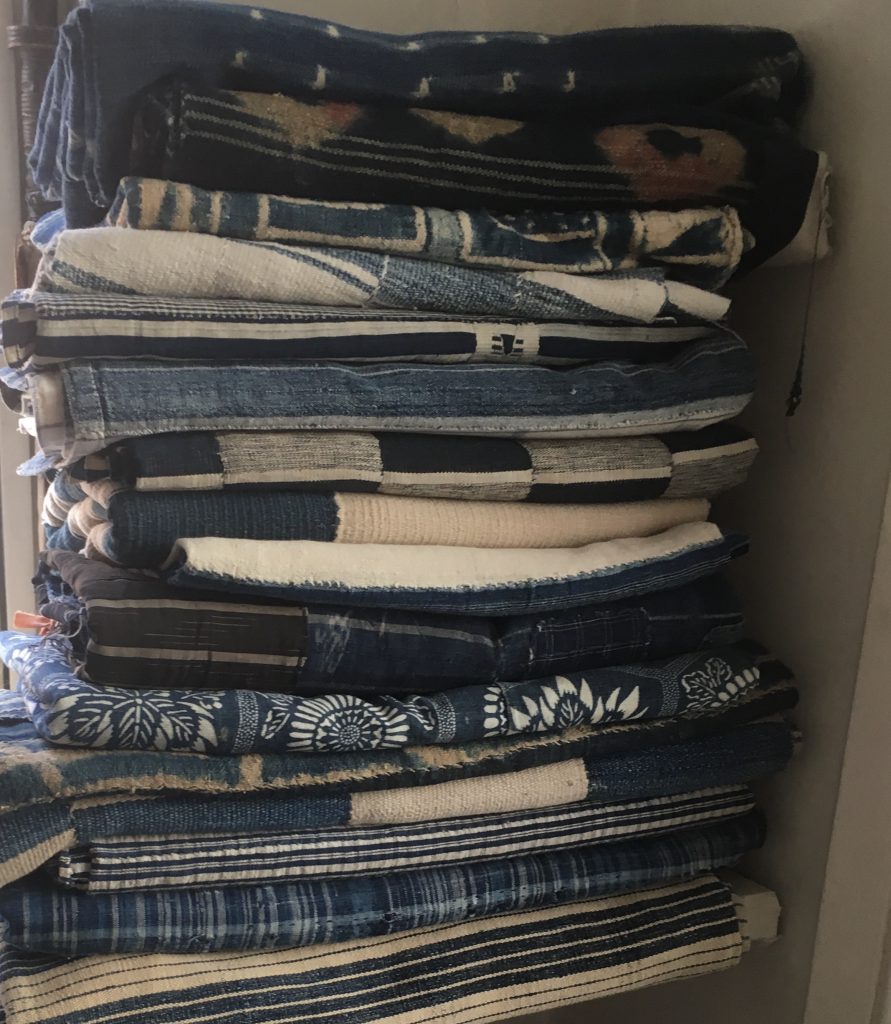


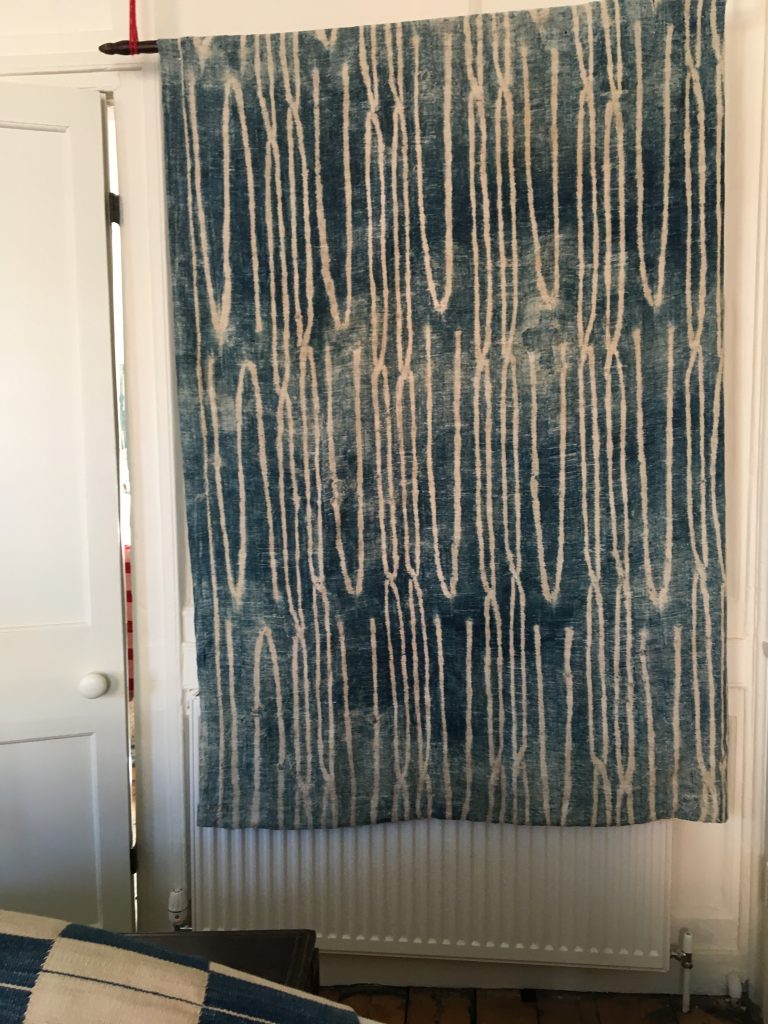
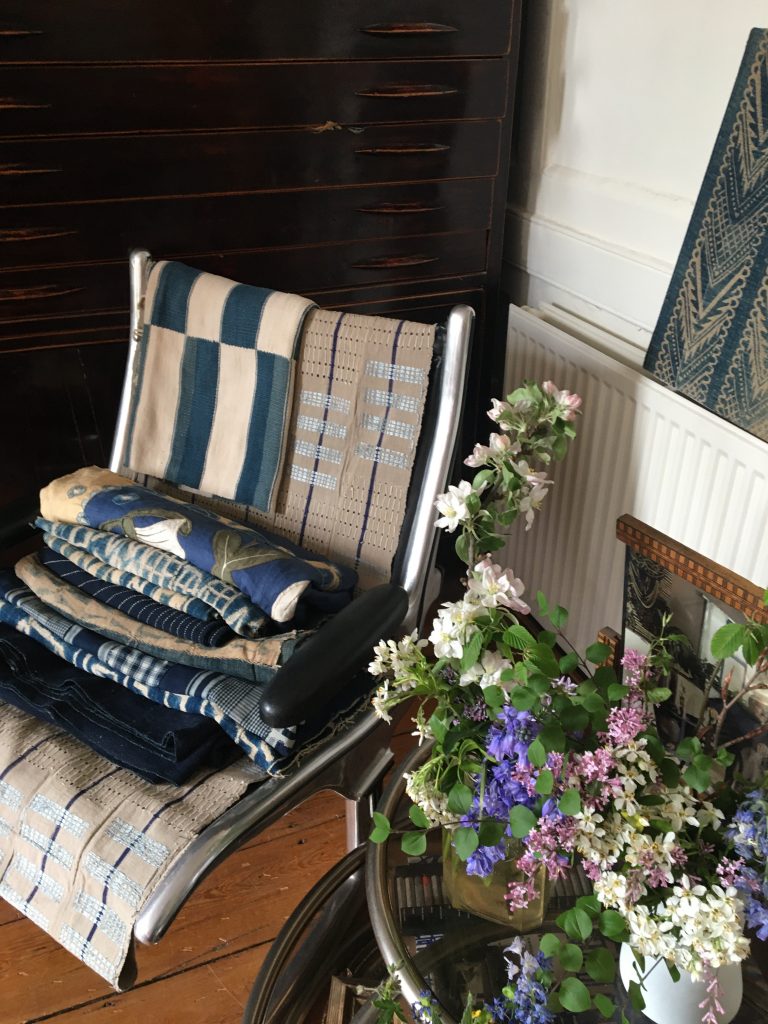





Exhibition Hampstead
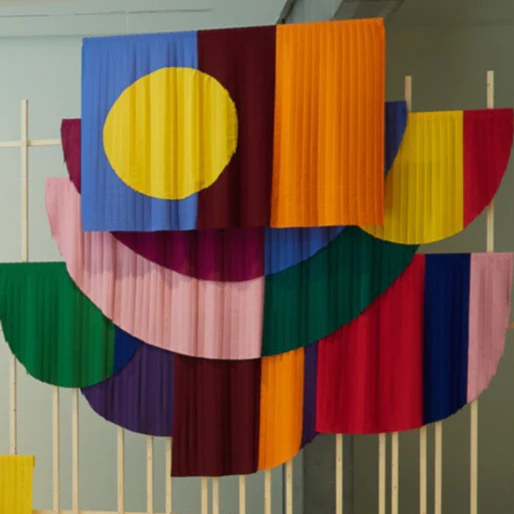
The word for crisis in Chinese means opportunity, so maybe this is our opportunity to rebalance our ways, for us all to survive and grow on this beautiful planet. The young are leading the way in refusing to buy new clothes and many spend weekends thrifting.
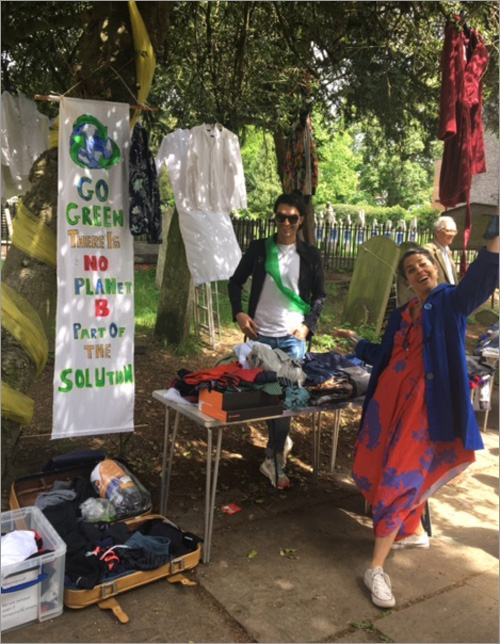
Textiles are the second most polluting industry. Some of what is manufactured goes into land fill within 6 weeks of it being purchased.
It is important to buy better quality and less often. Pleasure should be part of making, selling and owning.
I have recently found a tunic by Raymond Duncan below is a quote
“Make yourselves in working today most people destroy themselves in working. “
A quote from Raymond Duncan’s interview with Orson Welles in in 1955 This is wonderful do watch:
Later in the year we had a craft fair of things we had made or recycled.
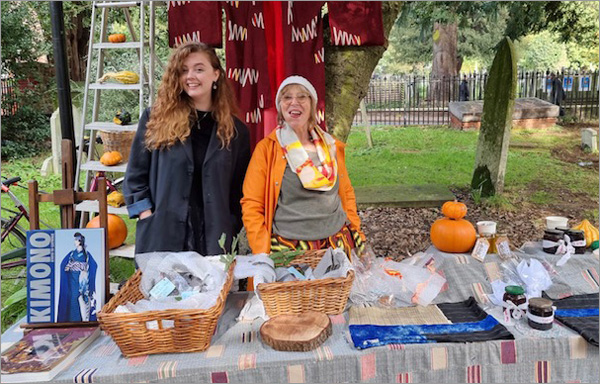
Exhibitions began to open again and it was a total joy to see Louise Bourgeois exhibition “The woven child”
Textiles are so much part of our emotional memory . As a daughter of a tapestry dealer and a tapestry restorer she had more experience of this resonance than most. Weaving was part of her DNA. Spiders were weavers too, she called her spiders Maman.
Inspired by this exhibition we have been re-inventing some rare fragments. We may put these in a separate section.
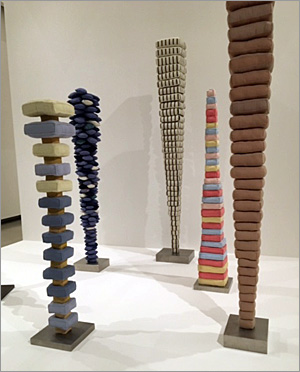
In April the William Morris Gallery hosted an exhibition of Althea Macnish.
We lent one piece to the exhibition which was Van Gogh, commissioned by Hull Traders in 1960 .
This was curated by Rose Sinclair from Goldsmiths University and introduced new material and research.

In May this year we exhibited at The Decorative Fair in Battersea – unfortunately I got Covid just before the set up. My wonderful friends rallied around and helped me and by opening day I registered negative.
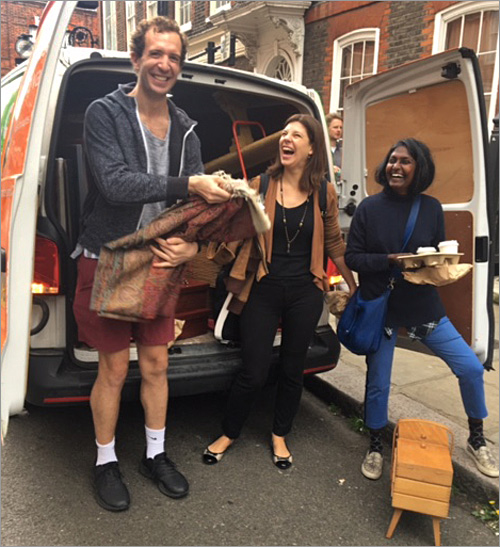
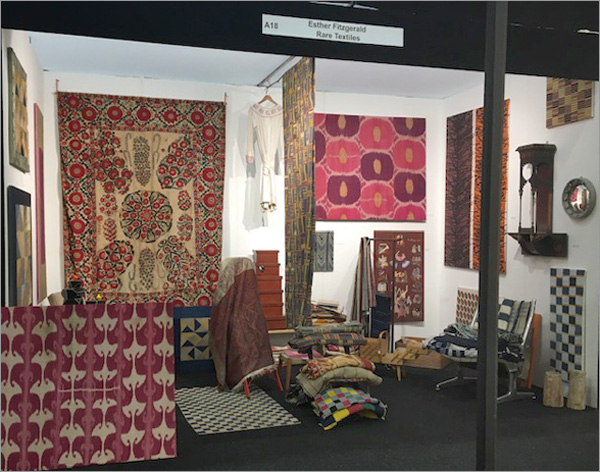
The flavour of the year has been African textiles- particularly Ewe Cloths from Ghana .
Many new ones have been added to the African section.
We have a new tunic by the above mentioned Raymond Duncan (brother of the dancer Isadora Duncan) which seems very relevant to today . In modernist section along with a design by Donald Hamilton Fraser.
In the Islamic section we have the best Suzani I have ever had the good fortune to handle which once belonged to William Burrell.
On the downside I have been Scammed out of my .com domain web address which also includes email sent via
.com email address
Please in future use estherfitzgerald.co.uk and email – esther@estherfitzgerald.co.uk
The next few months will be a challenge, let’s rise to it. The secret, I believe, is community all problems are better shared.
Very Best Esther
It seems that not a great deal has happened in the textile world , since almost the whole world went into lockdown in March 2020. However lockdown has given us the opportunity to slowdown and recalibrate and connect .The population of London is over 9 million but during lockdown it began to feel like a small village. We walked and talked and shared common experiences of being in our gilded cages and things were not all bad.
When we slowly opened up again I went to Camden Art Centre to see the Botanical Mind . Art, Mysticism and The Cosmic Tree. So much information and connection I felt positively giddy . It certainly wasn’t a serene experience but I totally identified with all its ideas. From Hildegarde of Bingen to C.G Jung ,Albers and beyond it echoed the idea that us textile lovers see and understand through our handling of textiles from diverse cultural back grounds.
I have added the film from the exhibition here as it explains the idea far better than I will:
More recently I was asked by Polly Lenard the founder of Selvedge to do a virtual talk on the subject of Collecting which Polly has kindly consented to me posting here .
I was joined by Sophie Roet and Bess Nielsen.
Virtual seems to be the modus of the day and staring on 26 th January until 14 th February I will be exhibiting at a virtual fair.
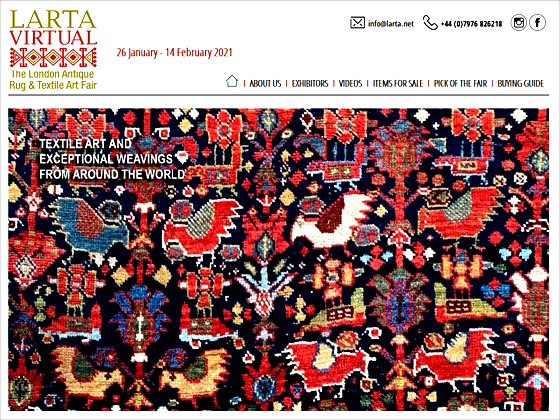
I have not acquired a great deal of late but we have added a few new acquisitions, a new Ikat robe , andIkat mounted panel in Islamic and a very graphic Cameroon Ndop cloth in Africa.
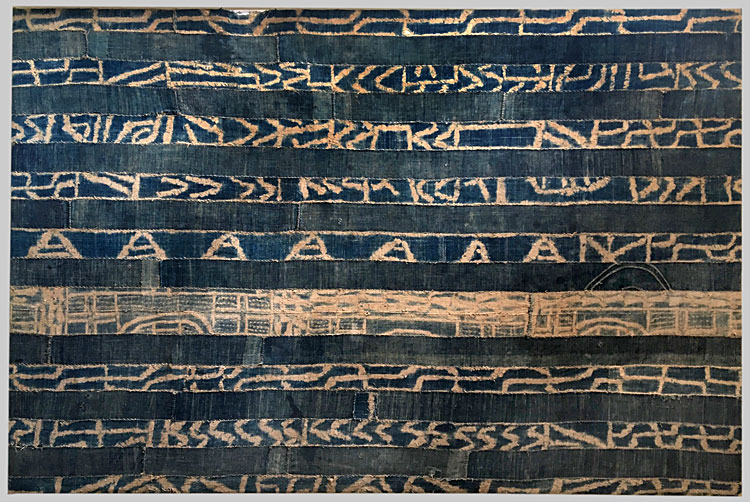
As I write Joe Biden has just been sworn in as Us President and world seems a safer, better place.
However Covid is still a very present issue so please all stay safe.
We will emerge from this episode with a clearer understanding of who we really are and what we must do to benefit the common good.
I was very excited about a few exhibition which were scheduled in the last few months.
One was Messums at Tisbury. This is situated in the beautiful Wiltshire countryside in a 13 th century tithe barn .The barn is exquisite, its shell resonates its age and its form follows function. (Absolute must see!)The exhibition entitled ‘Material’ held so much promise featuring Pre Columbian weaving, post modernist printed cottons, contemporary textiles and a huge installation by Henrik Vibskov. But there is something about textiles that modern art curators seem uncomfortable with. Although the individual exhibits were interesting ,nothing pulled the exhibition together . Every thing in my mind is story led and in this case there wasn’t one. It was, I thought, with a few exceptions : a missed opportunity. As you know I love textiles but I felt no engagement.
Faith Ringgold exhibition at the Serpentine Gallery until September 8th is a delight. She combines painting with appliqué and quilting both telling a story and placing it in a cultural time and space. My favourite was “ on tar beach “ it was a urban novel with so many contradictions.
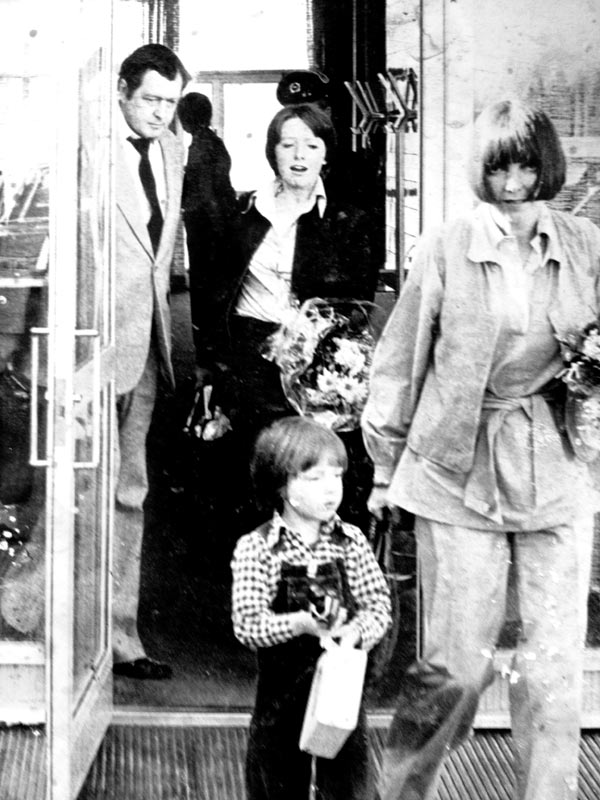
Mary Quant and Dior shared a venue at V&A . For me it was a bit of a flash back .I worked for Mary for three years from 1973 to 1976, we lived in Alexander Square just opposite the V&A . This was just outside the time covered by the exhibition. My overwhelming memory of those years was of kindness and inclusiveness . By 1970’s Mary and her husband Alexander Plunket Greene were more into life style than fashion and were possibly the first to go into the holistic life market which is so on trend today.
I thought it interesting that Dior and Quant were shown together. The wealth and opulence of The House Dior and the liberation of youth / street culture were sharply contrasted in very different displays. Echoing the extremes that today are even more polarised between the extreme wealth and the rest of us
Natalia Goncharova at Tate Modern
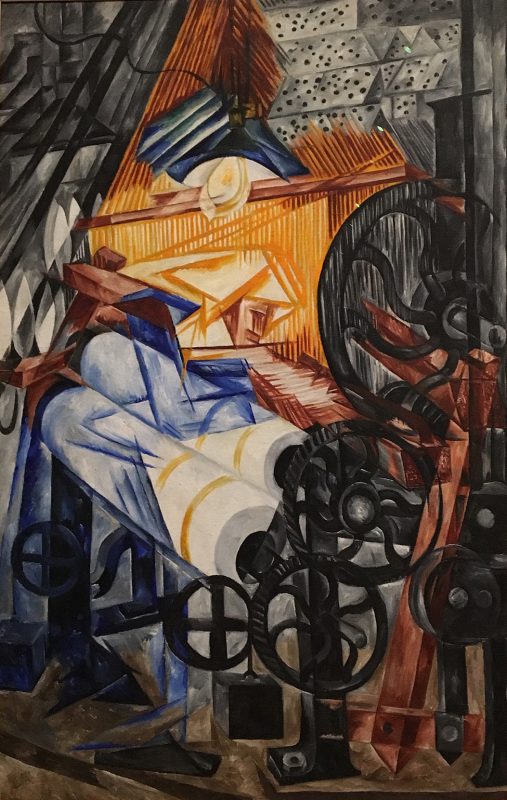
We acknowledge all styles as suitable for the expression of art,styles existing both yesterday and today ….. The art of the past ,like life, is an object of observation.
Goncharova was an exceptional woman defying all conventions .By 1913 she had exhibited over 800 works that transcended media and style including paintings , works on paper, designs for Ballet Russe ,propaganda ,textiles and fashion . It is sometime over looked the influence Ballet Russe had on Modernist thought. As a woman of course it helped that Goncharova came from a wealthy family ( textile Manufactures since the 18 th century)but she was relevant then as she is today modern and contemporary looking at her society and getting clues from the text of society.
Textiles and pollution
Of late it has been difficult to ignore the very real fact that current textile market is responsible for a large amount global pollution. In fact after the oil industry it is the second most polluting industry in the world. Polyesters create micro fibres that enter our water system for ever! Dyes create 20 % of fresh water pollution. The textile industry creates 1.2 billion tonnes of green house gas. And at the end of the day – the current high fashion item lasts 6- 8 weeks in our wardrobes – it all goes into land fill.
We all have to consume less and recycle! With this in mind I have opened a new section, Rare to wear / vintage .Please check it out – we have some early 20 century Irish crochet collars. a late 19 th century french Bobbin lace collar. All could add to your capsule wardrobe and transform an outfit. In the second half of 19th century lace making and embroidery were one way of relieving famine and poverty.
The market
Comfort or annoy
The extremely rare chintz seen below, turned up in a small auction house recently with an estimate of between £350 and £400. I only know of two other pieces and one is in a National Museum – I was so excited……I sat through the whole sale from my computer at home only to see it purchased for well over £22,000. I suppose this was a comfort of sorts as it underlined the fact that there is knowledge and desire for beautiful rare textiles out there but I so wanted it to be mine!
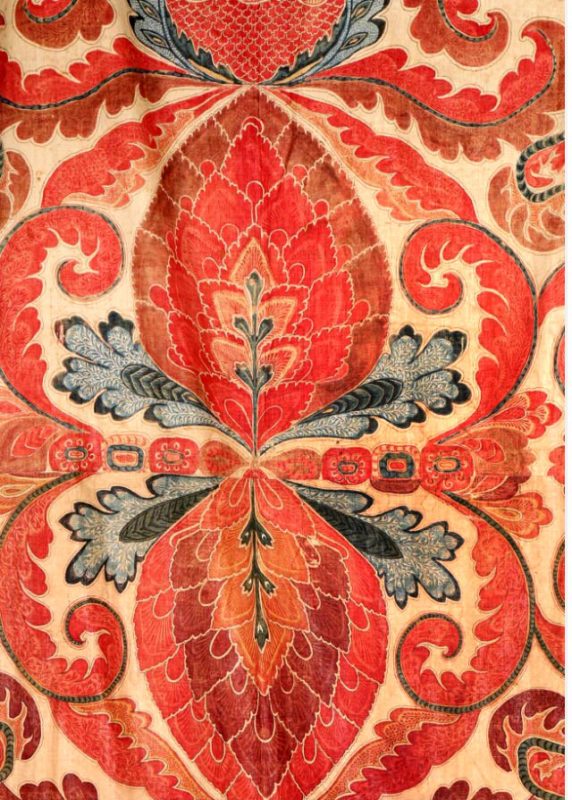
Recently the Roderick Taylor collection came on the market and I was lucky enough to acquire some interesting pieces. One see ‘islamic section ( link ) is a Turkish-embroidered sofa cover depicting ideas of Arcadia . I also bought a group of embroidery from Rhodes . Dating from the late from around 1700 reflecting armorial designs left over from the time of the crusades.
The video on this News update features an extraordinary embroidery which I have been researching for 30 year it was created around 1690 to 1700 in England. My research (to this point is incomplete ) is on the source material for the variety of images represented. Any clues most welcome. …..
There are new textiles in every category as it’s been a very long time since we sent an update.
Very best wishes, Esther
Art is not the truth
Picasso wrote “Art is not the truth but the lie that enables us to realise the truth ……. the artist must know how to convince others of the truth-fullness of his lies “
Agnes Martin’s work has been defined as “an essay in discretion, on inwardness and silence”.
It is reported that Picasso became very upset on seeing a truth in a piece of tribal art that he could not have achieved himself.
Would Agnes Martin have been upset or comforted by the inward silence seen in an Mali, indigo weaving?
I have been pondering these things in reference to the forthcoming exhibition of Anni Albers.
– I personally respond to textiles which look rather like Rothko’s colour fields, but also conveys the feeling of light and space of a James Turrell. If I am exposed to a truth, does the source matter if it’s not a branded artist ? Or do we all become our own curator/ artist, gatherer of truths in the beauty we collect ?
Anni Albers
Anni Albers like most other women at the Bauhaus had no choice but to go to the weaving class. In Germany women were encouraged to go into law , medicine and academia but in the art world and specifically the Bauhaus, life wasn’t that liberated . As much as the Bauhaus men wanted to be inclusive they didn’t want it at it their own cost . The weaving class even had to provide its own looms. Of the 21 looms in the weaving studio only 4 belonged to the Bauhaus .Utopia it wasn’t! ………….
Two art philosophies struggled to survive along side each other. On one side Itten ,Kandinsky and Paul Klee wanting to develop the individual through art .The other – Gropius and the rationalist designer wanting to reshape the human world through design.
Annie and her husband Joseph seem to have successfully straddled both. So I am excited to see exhibition which starts 11th October .
Too modern for the Royal College
I have been to my first exhibition at House of Illustration in Granary Square.
The book: Enid Marx-The Pleasure of Pattern, by Alan Power, is essential reading for those interested in early 20th textile design.
She was initially turned down by the Royal College for being ‘too modern’ Which says a lot about the Royal College before Paul Nash joined the staff.
Marx was invited to join the Omega Workshop by Roger Fry. She turned him down as she regarded the quality of production slapdash, with little understanding of material. She was a thorough professional in her approach which made her a natural to receive The Royal Designer for Industry Award in 1944. Marx appears to have a been a great enabler of her many friend’s talent.
‘Homeless in our own living rooms’
During my stay in Norway in the summer,I visited the National Museum in Oslo where they were staging the largest exhibition ever , of Gerhard Munthe’s tapestry and decorative arts. Munthe was the first designer to consider the identity of Norway through design. Before this he suggests ‘they were homeless in there own living rooms’. Surrounded by things produced elsewhere . It is interesting to see that in Norway like the UK designers looked to their distant past for inspiration to go forward. In Munthe case looking at Norse myth .
New Textiles
I am thrilled to have found by a strange Turkish textile which I am hoping is Sufi. See: Islamic. Also new in Islamic is a early 18th century, Mogul, Kashmir sash
I have bought some indigo weavings to inspire inner silence: see indigo and a few African pieces: see Africa .Also are rare Greek Island piece – see Europe
As you have possible noticed- I have always been behind in marking things sold but I think we are now up to date!
We still plan to update the site but it is on the back burner at the moment.
It has been a long hot summer, it’s now good to feel the crisp September mornings,
Please fell free to contact us with your rare textile issues.
Very Best Esther